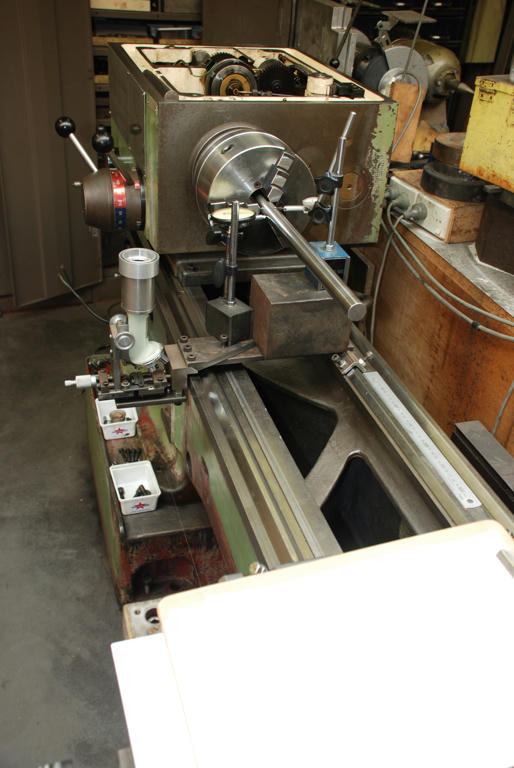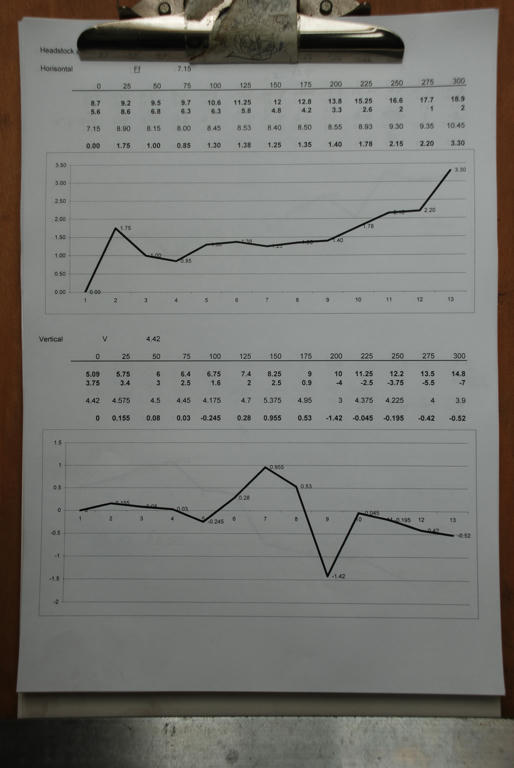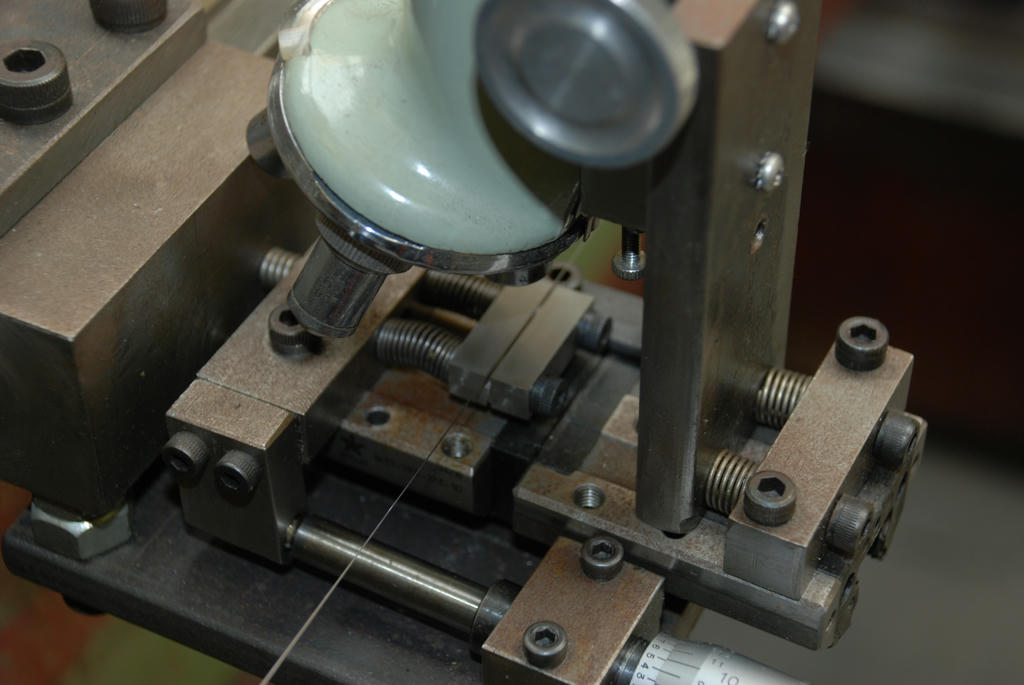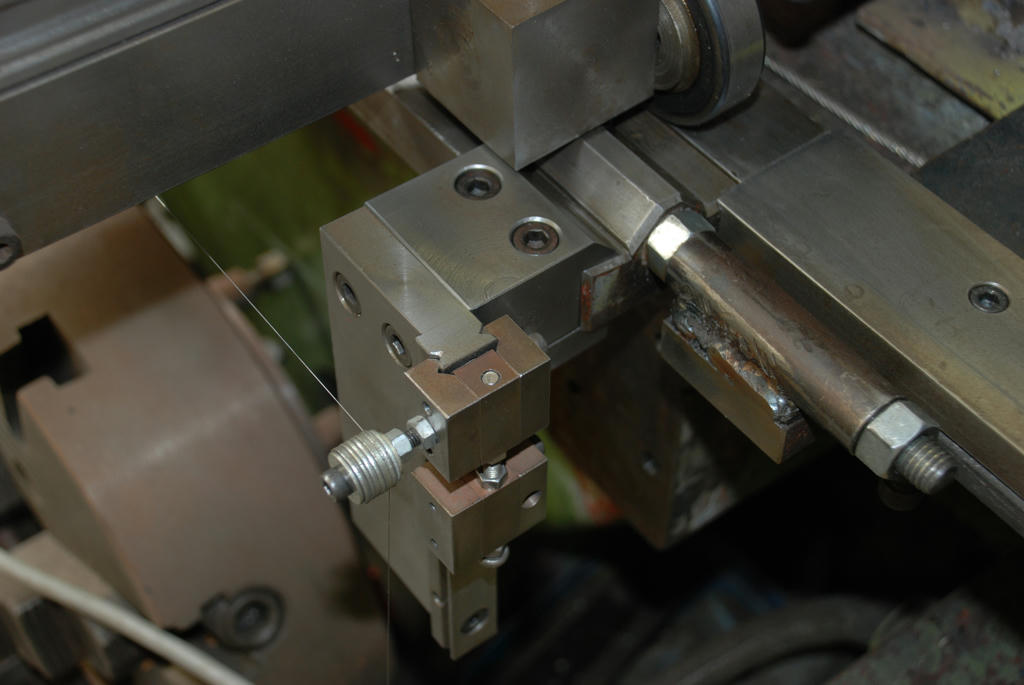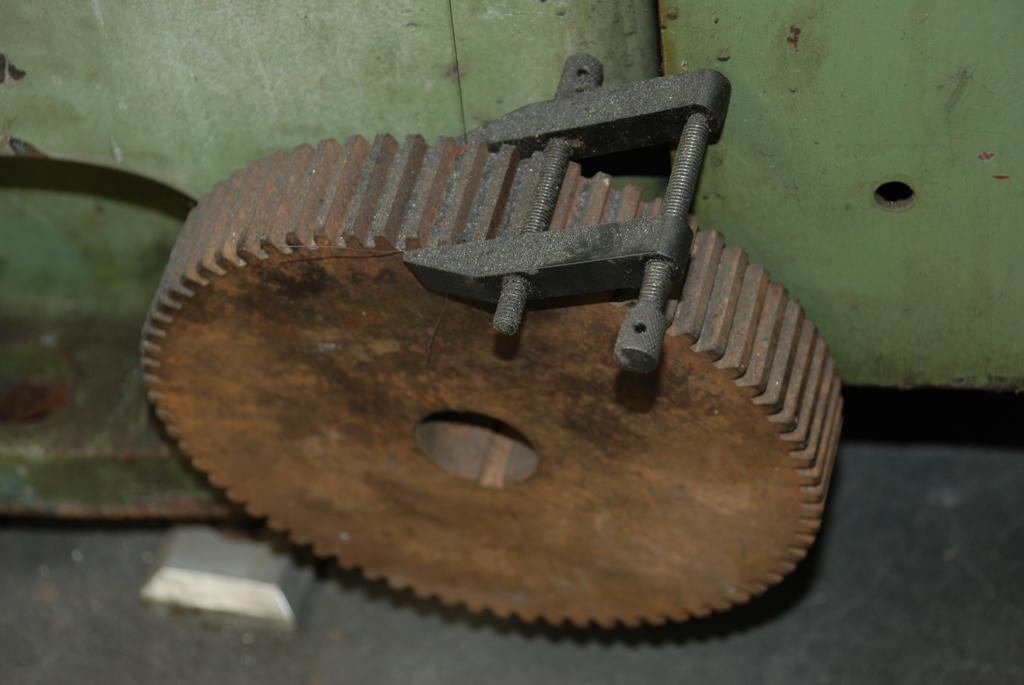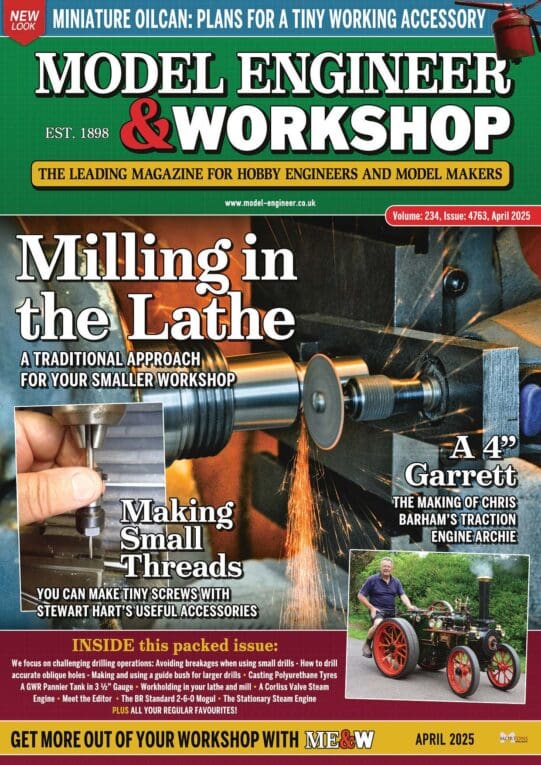Hi All
As an alternative if you have a precision ground bar
25 – 40mm is ideal, of constant diameter say to
within ten thou and as well you have a tenth
accuracy dial indicator you can use these to check
the axis of your machine.
Just set the bar up in your chuck a 3 will do but
better a 4 jaw. Use the dial indicator to centre it. If
you have a 4 jaw chuck.
After cantering one point unless you are very lucky
the bar will not be in line with the machine axis at all
points. Also your precision ground bar may not be
perfectly straight, it does not matter! The dial
indicator is going to sort out any wobble in the bar.
We are going to take several measurements along
the bar, if it is say 300mm long maybe measuring it
ever 2cm would be a good start.
After setting up your dial indicator on the saddle and
moving it to the start point of your measurements
say near the chuck, and checking it is on centre you
are ready.
You will also need a ruler or other means to move
the carriage to the next measuring point.
Rule off rule off a piece of paper it will need 4
columns and as many rows as you have measuring
points. Mark the 4 columns; position, High, Low,
High minus Low
Now we are ready to find if there is any alignment
error between the axis of our lathe spindle and the
path travelled by a cutting tool at the diameter of our
test bar.
Before starting check again that the tip of your
indicator is on centre, and you are at the first
reading position 0.
Then rotate the spindle until the indicator reads
highest and note the reading on your paper in the
high column.
Then rotate the spindle until the indicator reads
lowest and note the reading on your paper in the
low column.
Repeat this for all the other positions.
At this point you have all the other highs and lows,
we can now calculate the error! Subtract the low
from the high and note the result in the last column.
You may get positive and negative numbers.
Repeat this for all the other measurements the
results will either be all the same (very unlikely), or
they will differ hopefully progressively, a straight line
error, you have a straight bed and saddle travel. But
the alignment to the spindle is out.
Alternatively the result will describe a curve this
indicates a straightness error in the alignment of the
saddle and bed as well as any overall error between
the alignment of the saddle and bed. On older
lathes there is often some error detected a dip in
the bed near the spindle is very common.
If you can use Excel you can do all this on a
spreadsheet and graph it.
This method does not check the alignment of the
taper in your spindle to the axis of rotation. However
this is easily done with a finger type dial indicator.
This method is a very good indicator of the
condition of any machine slide to spindle alignment.
To speed this process up fewer measuring points
can be used. Or for extreme accuracy more points.
Regards
John
John McNamara.


